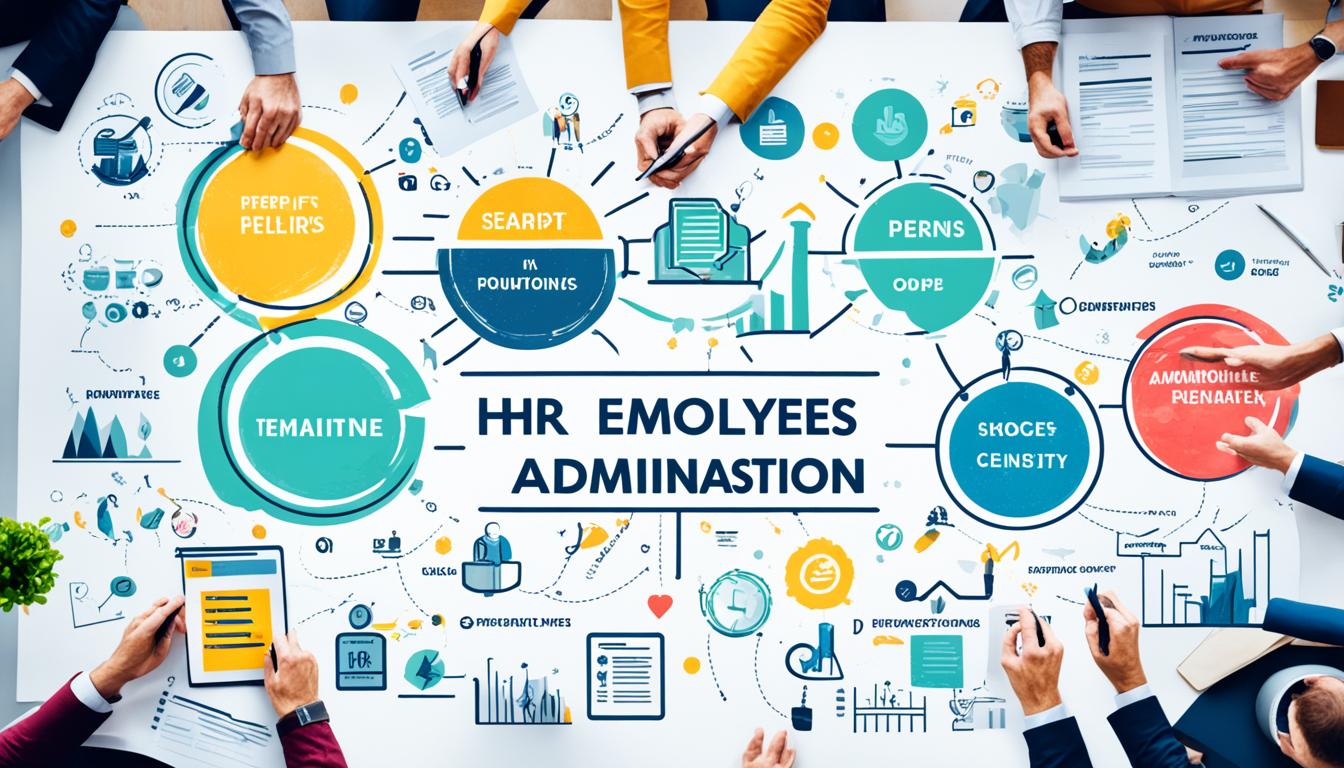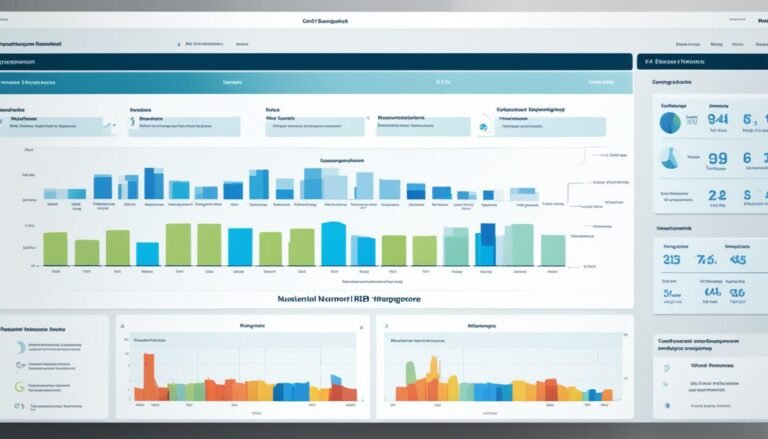A Guide to HR Benefits Administration
Benefits administration is an essential aspect of human resource management. It involves creating, managing, and updating an organization’s employee benefits program, which includes health insurance, retirement accounts, vacations, paid time off, and parental leave. A well-designed benefits program is crucial for attracting and retaining top talent and creating engaged employees.
To effectively manage HR benefits, organizations need a comprehensive benefits management system. This system encompasses HR benefits software and benefits administration services to streamline the process and ensure compliance with regulations. HR personnel play a vital role in enrolling new employees and administering the benefits management process. They work closely with benefits administrators to plan and administer employee benefit programs while staying updated on the latest trends in benefits programs.
HR benefits management requires careful consideration of insurance coverage options and selection of vendors. It also involves regularly evaluating and updating the benefits program to align with employees’ needs and the organization’s goals.
Key Takeaways:
- HR benefits administration involves managing an organization’s employee benefits program.
- A competitive benefits program is crucial for attracting and retaining talent and creating engaged employees.
- Benefits management system and HR benefits software streamline the administration process.
- HR personnel play a crucial role in enrolling new employees and administering benefits.
- Regular evaluation and updating of the benefits program ensure it aligns with employees’ needs and organizational goals.
The Importance of Benefits Administration for Employee Engagement
A competitive benefits program plays a crucial role in employee engagement. Employees are less likely to look for another job when their benefits fit their needs, reducing stress and offering peace of mind.
Benefits administration is responsible for creating a benefits program that meets the needs of employees and ensures compliance with regulations. A benefits administrator plans and administers employee benefit programs, manages health, dental, vision, disability, and life insurance, as well as retirement plans and flexible spending accounts. They also help educate employees on benefits options and ensure the employee benefits management process is seamless.
“A well-designed benefits program can contribute to higher employee satisfaction, productivity, and loyalty.”
Key Components of Employee Benefit Plans
Employee benefit plans play a crucial role in attracting and retaining top talent, enhancing employee satisfaction, and promoting overall well-being. These plans typically encompass various components that cater to the diverse needs and preferences of employees. Let’s explore the key components of employee benefit plans:
| Component | Description |
|---|---|
| Health Insurance | Provides coverage for medical expenses, including doctor visits, hospital stays, and prescription medications. Employers often offer different types of health insurance plans, such as HMO, PPO, POS, and HAS, to cater to employees’ varying needs. |
| Dental Insurance | Allows employees to access dental care services, including routine check-ups, cleanings, and dental procedures. Employers can fully fund the dental insurance or share the cost with employees through premium contributions. |
| Flexible Spending Accounts (FSAs) | Enable employees to contribute pre-tax income to an account designated for medical expenses. FSAs cover a wide range of eligible expenses, such as prescription medications, co-pays, and medical supplies, helping employees save money on healthcare costs. |
| 401(k) Retirement Plan | Offers employees an opportunity to save for retirement through pre-tax contributions deducted from their salary. Employers may provide matching contributions to further encourage employees’ long-term savings and help them secure their financial future. |
| Non-Traditional Benefits | Include additional perks beyond traditional insurance and retirement plans. These benefits aim to enhance work-life balance, promote employee well-being, and accommodate changing lifestyles. Non-traditional benefits may encompass flexible work schedules, remote work opportunities, financial wellness resources, and unlimited paid time off (PTO). |
By offering a comprehensive employee benefit plan that encompasses these components, organizations demonstrate their commitment to their employees’ overall well-being and create a supportive work environment. This, in turn, fosters higher employee satisfaction, engagement, and loyalty.
Improving Your Employee Benefits Management Process
To enhance your employee benefits management process, it is essential to conduct a thorough benefits needs assessment. This assessment helps identify areas that require improvement and ensures that your benefits program aligns with the needs and expectations of your workforce.
Gathering employee feedback is another crucial step in optimizing your benefits management process. Actively seeking input from employees provides valuable insights and helps you understand their preferences and concerns. It is recommended to provide multiple channels of communication, such as surveys, suggestion boxes, and regular feedback sessions, to ensure that employees feel heard and valued.
“Employee feedback is a valuable resource that can drive meaningful improvements in your benefits program.”
Measuring and tracking the effectiveness of your benefits program is vital to ensure that it is meeting its goals. By setting clear metrics and regularly evaluating program performance, you can identify any shortcomings or areas of success. This data-driven approach allows you to make informed decisions and adjustments to enhance the overall effectiveness of your benefits program.
Employee education and training are instrumental in maximizing the utilization of benefits. Informed employees can make better decisions and understand the value of the benefits you offer. Providing educational resources, workshops, and personalized guidance can empower employees to take advantage of the available benefits and improve their overall well-being.
“Effective communication and education are key factors in driving the success of your benefits program.”
Streamlining your benefits administration processes with the help of technology can significantly improve efficiency and reduce errors. Implementing benefits administration technology allows for seamless enrollment, automated communication, and streamlined data management. This technology not only saves time and resources but also ensures accurate and compliant benefits administration.
By combining a comprehensive benefits needs assessment, employee feedback, effective communication, employee education, and benefits administration technology, you can elevate your employee benefits management process to new heights. This holistic approach enables you to design and administer a benefits program that meets the diverse needs of your workforce while maximizing its impact on employee engagement and satisfaction.
| Benefits Management Process | Actions |
|---|---|
| Benefits Needs Assessment | Conduct a thorough assessment to identify areas for improvement. |
| Employee Feedback | Regularly gather feedback to understand employee preferences and concerns. |
| Program Effectiveness | Measure and track the effectiveness of the benefits program based on defined metrics. |
| Employee Education | Provide employees with educational resources and training on benefits utilization. |
| Benefits Administration Technology | Implement technology solutions to streamline processes and reduce errors. |
Streamlining Open Enrollment with Benefits Administration Software
Open enrollment can be a major challenge for HR professionals and employees. The process of enrolling in employee benefits can be complex and time-consuming, leading to confusion and frustration. However, with the help of benefits administration software, organizations can streamline the open enrollment process for a more efficient and user-friendly experience.
Benefits administration software automates various tasks related to open enrollment, allowing employees to access and learn about their benefit options online. This eliminates the need for repetitive questions and paperwork, saving time for both HR professionals and employees. By providing a centralized platform for all open enrollment and benefits data, the software ensures that pertinent information is easily accessible and well-organized.
The software also tracks data on plan choices, enrollment numbers, and more, providing valuable insights for HR professionals. With this data, organizations can analyze trends, make informed decisions, and optimize their benefits programs. By understanding which benefits are most popular among employees and which ones are underutilized, organizations can tailor their offerings to better meet their employees’ needs.
One of the key benefits of benefits administration software is its ability to facilitate paperless enrollment. By eliminating the need for physical paperwork, organizations can significantly reduce their environmental impact and save printing costs. Paperless enrollment also allows for a more efficient and streamlined process, as employees can complete and submit their enrollment forms electronically.
Furthermore, benefits administration software offers a centralized data storage solution. By storing all open enrollment and benefits data in one secure location, HR professionals can easily access and manage the information they need. This eliminates the need for multiple spreadsheets or physical files, reducing the risk of errors and data loss.
Streamlining the open enrollment process with benefits administration software offers numerous benefits for both HR professionals and employees. It saves time, reduces paperwork, provides valuable insights, enables paperless enrollment, and offers centralized data storage. With these advantages, organizations can create a more efficient and user-friendly open enrollment experience that ultimately leads to higher employee satisfaction and engagement.
| Benefits of Benefits Administration Software for Open Enrollment | |
|---|---|
| Saves time for HR professionals and employees | + |
| Eliminates repetitive questions and paperwork | + |
| Provides a centralized platform for all open enrollment and benefits data | + |
| Tracks data on plan choices, enrollment numbers, and more | + |
| Facilitates paperless enrollment | + |
| Offers centralized data storage | + |
The Role of Benefits Administration Software in HR Management
Benefits administration software plays a crucial role in effectively managing and streamlining HR benefits administration. By leveraging advanced technology, this software automates various processes, ensures compliance with regulations, and enhances decision-making. Let’s explore the key features and benefits of benefits administration software.
Automated Eligibility and Enrollment Processes
Benefits administration software simplifies the eligibility and enrollment processes for employees. It automatically verifies employee eligibility based on predefined criteria, making it easier for HR professionals to determine the eligibility of each employee for specific benefits. The software also facilitates seamless enrollment by providing an intuitive interface for employees to select and enroll in their preferred benefits options.
Decision Support Tools
One of the key advantages of benefits administration software is the availability of decision support tools. These tools provide employees with comprehensive information about the various benefits options available to them. They can compare and evaluate different plans, enabling them to make informed decisions based on their individual needs and preferences. This empowers employees to choose the benefits that best suit their unique circumstances.
Compliance and Risk Assessment
Benefits administration software ensures compliance with relevant regulations and laws. It automatically incorporates legal requirements into the benefits administration process, reducing the risk of non-compliance. Additionally, the software often includes risk assessment protocols to protect sensitive employee information. This helps organizations maintain data security and confidentiality, mitigating potential risks associated with benefits administration.
Centralized Benefits Access and Tracking
With benefits administration software, employees can conveniently access their benefits information through a centralized platform. They can view their benefit elections, coverage details, and utilization reports, ensuring transparency and easy management of their benefits. The software also tracks data on benefit choices, providing HR professionals with valuable insights that can be used to optimize benefit offerings based on employee preferences and usage patterns.
Direct Communication and Integration
Benefits administration software facilitates direct communication between HR professionals, employees, and insurance carriers. It streamlines communication channels, allowing employees to submit inquiries and receive prompt responses from HR representatives or insurance carriers. The software also integrates with other HR management systems, such as payroll and employee database systems, ensuring seamless data transfer and synchronization.
| Benefit Administration Software Features | Benefits |
|---|---|
| Automated eligibility and enrollment processes | Saves time and reduces manual errors |
| Decision support tools | Empowers employees to make informed decisions |
| Compliance and risk assessment | Ensures regulatory compliance and protects sensitive information |
| Centralized benefits access and tracking | Enhances transparency and enables data-driven decision-making |
| Direct communication and integration | Streamlines communication and enhances data integration |
Benefits administration software revolutionizes HR management by simplifying and optimizing the benefits administration process. It empowers employees to take control of their benefits, while enabling HR professionals to efficiently manage eligibility, enrollment, compliance, and communication. By leveraging benefits administration software, organizations can enhance their overall HR management practices and ensure a positive and seamless employee experience.
The Complexities of Employee Benefits Administration
Employee benefits administration involves the creation and management of a wide range of benefits, ranging from insurance coverage to compliance requirements. This process can be challenging due to the need to determine the most valuable and attractive benefits for a diverse workforce, as well as the ever-changing landscape of compliance laws.
One of the key aspects of employee benefits administration is the development of a comprehensive benefits strategy. This strategy should align with the organization’s overall goals and objectives while also meeting the needs of employees. It requires careful consideration of factors such as employee demographics, industry benchmarks, and budget limitations.
Compliance is another significant complexity in benefits administration. HR professionals must navigate a complex web of federal, state, and local laws to ensure that employee benefits programs are compliant. This includes understanding regulations related to health insurance, retirement plans, paid leave, and other benefits.
Effective employee communication is crucial in benefits administration. HR teams must ensure that employees understand their benefits options, including eligibility requirements, enrollment periods, and coverage details. Clear and concise communication helps employees make informed decisions and maximize the value of their benefits.
Rising costs present an ongoing challenge in benefits administration. As healthcare costs continue to rise, employers must find ways to manage and control expenses while still offering competitive benefits. This requires a careful balance between cost containment strategies and providing attractive benefits to employees.
Time management is another common challenge faced by HR teams in benefits administration. The process of managing benefits enrollment, communicating with employees, and handling administrative tasks can be time-consuming. HR professionals must find ways to streamline processes and optimize efficiency to ensure that benefits administration does not become overwhelming.
Employee Benefits Administration Challenges:
- Developing a comprehensive benefits strategy
- Navigating complex compliance laws
- Ensuring effective employee communication
- Managing rising costs
- Optimizing time management
Overcoming these complexities requires a strategic approach and the utilization of efficient benefits administration tools and technologies. By addressing the challenges head-on, organizations can create a benefits program that meets the needs of employees while maintaining compliance and managing costs effectively.
Solutions for Managing Employee Benefits Administration
Managing employee benefits administration can be a complex task, but there are strategies and tools that organizations can utilize to overcome challenges and ensure a streamlined and effective process. By implementing employee engagement strategies, leveraging benefits administration tools, conducting employee surveys, and prioritizing communication improvements, HR professionals can enhance their benefits administration practices and create a positive experience for employees.
Employee Engagement Strategies
Employee engagement plays a crucial role in the success of benefits administration. By implementing employee engagement strategies, organizations can foster a culture of appreciation, collaboration, and well-being. These strategies can include:
- Creating a sense of purpose and alignment with the organization’s mission
- Offering opportunities for professional development and growth
- Promoting work-life balance and flexibility
- Recognizing and rewarding employees for their contributions
When employees are engaged and motivated, they are more likely to actively participate in and appreciate their benefits.
Benefits Administration Tools
Benefits administration tools can significantly streamline the management process, saving time and reducing administrative burden. These tools provide a centralized platform for HR professionals to access and manage benefit-related information, automate enrollment processes, track employee data, and generate reports. Benefits administration tools can also aid in compliance management, ensuring that organizations are adhering to regulatory requirements. By implementing these tools, HR professionals can improve efficiency and accuracy in benefits administration.
Employee Surveys
Conducting regular employee surveys is an effective way to gather feedback and insights about the benefits program. Employee surveys can help identify areas for improvement, understand employees’ needs and preferences, and ensure that benefits offerings align with employee expectations. The feedback obtained through employee surveys can guide HR professionals in making informed decisions to enhance the benefits program and increase employee satisfaction.
Communication Improvements
Effective communication is crucial in benefits administration to ensure that employees have a clear understanding of their options, deadlines, and any changes to the benefits program. By improving communication efforts, organizations can enhance employee engagement and participation during open enrollment periods. HR professionals can communicate benefits information through targeted messages, engaging visuals, and user-friendly platforms. Additionally, providing training and educational resources that explain various benefits options can empower employees to make well-informed decisions.
Overall, by implementing employee engagement strategies, utilizing benefits administration tools, conducting employee surveys, and improving communication efforts, organizations can effectively manage employee benefits administration. These solutions can streamline processes, enhance employee engagement, and ultimately contribute to the overall success of the organization.
An image illustrating the importance of effective employee benefits administration
The Value of Benefits Administration in HR
Employee benefits administration plays a vital role in shaping company culture, attracting and retaining talent, and building a positive brand reputation. A well-managed benefits program reflects a company’s values and supports sustainable financial performance. It differentiates employers in the recruiting marketplace and contributes to overall business success.
“A well-designed benefits program not only attracts top talent but also engages and retains employees, which is crucial for long-term business success.” – John Smith, HR Director
Shaping Company Culture
A comprehensive benefits program is a key component of a positive company culture. It demonstrates that a company values the well-being and satisfaction of its employees, creating a supportive and engaging work environment. By offering competitive benefits, organizations can foster a culture of employee appreciation and loyalty.
Attracting and Retaining Talent
Top-tier employees are highly sought after in today’s competitive job market. An attractive benefits package can significantly enhance a company’s ability to recruit and retain talented individuals. Candidates often consider benefits as a crucial factor when evaluating potential employers, and a robust benefits program can give a company a competitive edge.
“Our comprehensive benefits package has been instrumental in attracting top talent to our organization, allowing us to build a highly skilled and committed workforce.” – Jane Doe, Talent Acquisition Manager
Building a Positive Brand Reputation
A well-managed benefits program can enhance a company’s brand reputation. When employees feel supported and valued through their benefits, they are more likely to speak positively about their employer. This can contribute to a positive employer brand image, attracting not only potential employees but also customers and business partners.
Comparative Table: Benefits vs. Brand Reputation
| Benefits Program | Brand Reputation |
|---|---|
| Competitive benefits package | Positive employer brand image |
| Employee appreciation and loyalty | Attracts customers and business partners |
| Enhances recruitment and retention | Positive word-of-mouth referrals |
The Future of Employee Benefits Administration
As employee well-being continues to take center stage in the workplace, the future of employee benefits administration is poised to adapt and evolve. Employers are recognizing the importance of prioritizing mental health resources and providing flexible work arrangements. Additionally, personalization of benefits offerings based on individual needs and preferences will become increasingly significant in the pursuit of employee satisfaction and engagement.
Advancements in technology will also play a significant role in shaping the future of benefits administration. Artificial intelligence and automation will streamline and enhance the administration process, allowing for greater efficiency and accuracy. This technological progress will enable HR professionals to focus on strategic decision-making and provide employees with a seamless benefits experience.
“The future of employee benefits administration lies in the intersection of employee well-being, personalization, and technological advancements.”
Employee well-being and satisfaction will continue to be a driving force behind benefits administration decisions and initiatives. Employers will explore innovative ways to support their employees’ mental health and overall well-being, understanding that happy, healthy employees contribute to a thriving workplace.
Furthermore, the shift towards remote work has accelerated due to recent global events, and this trend is expected to continue. As a result, benefits administration will need to adapt to accommodate the needs of remote employees, ensuring that they have access to the same level of support and benefits as their in-office counterparts.
Personalization: Empowering Employees with Choice
Personalization will be a key focus of future benefits administration strategies. Employers will recognize the importance of offering diverse options that address the unique needs and preferences of their employees. This may include flexible benefits packages, allowing employees to choose the benefits that align with their individual circumstances and values.
With personalization, employers can create a benefits program that truly resonates with their workforce, resulting in increased employee satisfaction, engagement, and ultimately, retention.
Technology Advancements: Streamlining Benefits Administration
The advancement of technology will revolutionize benefits administration, making processes more efficient and user-friendly. From automated enrollment systems to self-service portals, technology will offer employees easy access to their benefits information and empower them to make informed decisions.
Additionally, technology advancements such as AI-powered chatbots and virtual assistants will provide personalized support to employees, answering their questions and simplifying complex benefit-related tasks. These technological enhancements will save time for HR professionals and improve the overall employee experience.
As the future unfolds, employee benefits administration will continue to evolve, placing greater emphasis on employee well-being, personalization, and technology advancements. By prioritizing these factors, organizations can create a benefits program that effectively supports their workforce and drives employee satisfaction.
Conclusion
Managing HR Benefits Administration is a critical function that organizations must prioritize to attract and retain top talent while creating a workforce that is engaged and satisfied. By creating a well-designed benefits program and leveraging employee engagement strategies, organizations can ensure the overall well-being of their employees and contribute to the success of the business.
Overcoming challenges in benefits administration can be achieved through improved communication and the use of benefits administration tools. Effective communication is key to ensuring employees understand their benefits options and can make informed decisions. Additionally, utilizing benefits administration tools can streamline processes, reduce administrative burden, and enhance the overall employee experience.
As the future of work evolves, HR Benefits Administration will continue to adapt to meet the changing needs and preferences of employees. This includes a focus on employee well-being, with an emphasis on mental health resources and flexible work arrangements. Personalization of benefits offerings and advancements in technology will also shape the benefits administration landscape.
Ultimately, a well-executed HR Benefits Administration program not only enhances the company’s brand reputation but also plays a crucial role in attracting and retaining talent. By prioritizing the needs and well-being of employees, organizations can create a competitive advantage and foster a positive work environment.







